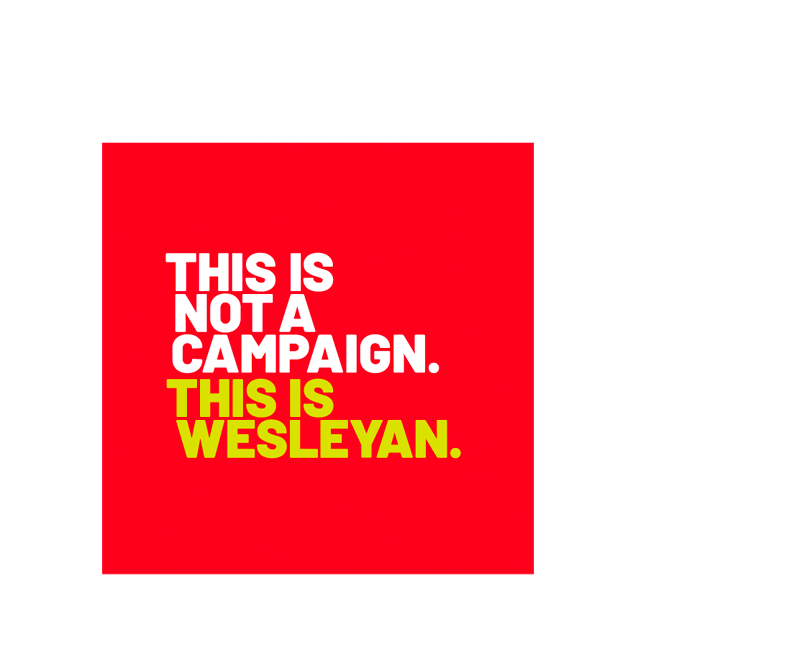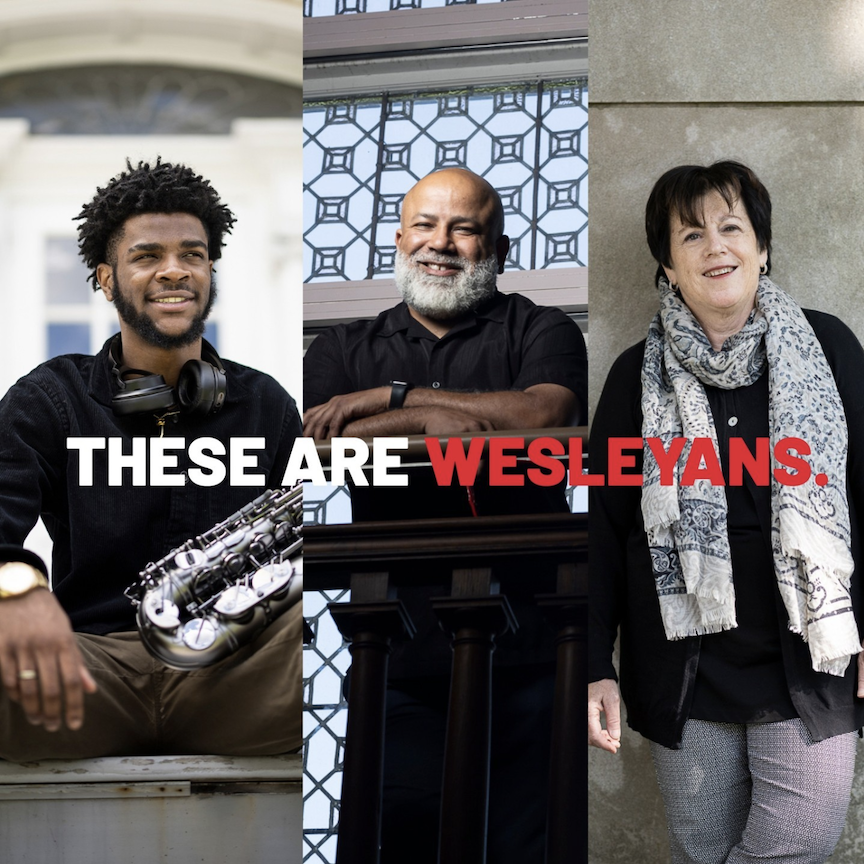
c/o Wesleyan University
The University launched a $600 million fundraising campaign entitled “This Is Not A Campaign. This Is Wesleyan” during Homecoming Weekend on Saturday, Oct. 28. This is the largest fundraiser in University history and has raised around $364 million so far. The money raised will be spent across several areas.
“The money we raise will help Wesleyan invest in three key areas: expanding access by increasing financial aid, supporting the teacher-scholars and campus spaces that make possible reaching and teaching across a wide array of academic fields, and bolstering the curricular and co-curricular programs that help to build a thriving community (like athletics, civic engagement, and career planning),” Assistant Vice President and Campaign Director Karen Kasprow wrote in an email to The Argus.

c/o Wesleyan Instagram Page
In terms of financial aid, the money will support the new African Scholars Program, which provides full four-year scholarships to a select few students from Africa. Additionally, the money is intended to reduce dependency on tuition for student aid, especially after the University’s decision to remove institutional and federal student loans from aid packages, and meet all demonstrated need in late September.
“We really want more money for financial aid, as a means to decrease our reliance on tuition as the core way of meeting our budgetary obligations,” President Michael Roth ’78 said.
The University will also spend money from the campaign on updating University facilities. Large projects like the new science center under construction on Church Street will be funded by the campaign, and improvements to student housing, including installing air conditioning in first-year residential halls and renovations to senior houses, are also being explored.
“We have a task force now working on prioritizing investments in the physical spaces on campus over the next decade and that’s likely to include focus on the residential spaces, which of our residential areas need the most work,” Roth said.
The campaign will also support the advancement of academic and cocurricular programs. Relatively newer programs in the College of Integrated Sciences and the College of Design and Engineering Studies are some of the major curriculum changes that will benefit from more funding.
The majority of the funds already raised have come from alumni donations. Other sources include foundations and bequests. According to Kasprow, the University hopes to reach its target by the end of the decade.
“We hope to reach our $600 million goal sometime between fiscal year 2028 and fiscal year 2029, though the timing will depend on the generosity of our donors, as well as on economic conditions,” Kasprow wrote.
Mission Minded was hired to assist in the campaign design. All those involved in the making of the campaign—including the company, the President’s Office, the Office of Advancement, and other offices in the administration—wanted to emphasize capturing the University as it is, beyond just its status as a liberal arts institution.
“By scrapping the term “campaign”…we are emphasizing that Wesleyan is so much more than a liberal arts college,” Kasprow wrote. “And members of the Wesleyan community can’t be described as just students, professors, or graduates. They are trailblazers, mentors, and change-makers.”
Kasprow emphasized the importance of community to the University and the importance of the University to the wider world.
“The Wes community makes Wesleyan the extraordinary place that it is, and Wesleyan, in turn, shapes that community,” Kasprow wrote “The world needs people who will challenge the status quo to find solutions to complex problems—the world needs more Wesleyan.”
The oxymoronic nature of this campaign prompted a range of reactions—especially humorous ones—from the University community. Since the initial post on the University’s official Instagram presenting Professor of Science in Society Anthony Hatch with a photo caption that read “This Is Not a Professor,” followed by a post of an alumnus captioned “This Is Not a Graduate” and another of a student captioned “This Is Not a Student,” many members of the community took to other platforms and mediums to expand on the oxymoron. Social media posts picture clubs, teams, events, and other things with captions that read “this is not [said thing].”
“I get the point,” Liv Rubenstein ’26 said. “I think the jokes people are making have been very funny. Spike Tape did a really good one, since they were in the middle of a fundraising thing: ‘This Is Not a Campaign. This Is Spike Tape.’ I think it’s fun; I’m curious to see what the school is going to do with $600 million. That’s a bananas huge amount of money.”
Roth shared the inspiration of the campaign’s style, which references the University’s previous campaign. It was titled “This Is Why” and centered around donors expressing why they support the University as opposed to the University explaining why donors should support it. Roth said that this new campaign idea was inspired by René Magritte’s painting “The Treachery of Images,” which depicts a pipe captioned with the sentence “ceci n’est pas une pipe,” meaning “this is not a pipe.”
“It was already a move away from the traditional campaign,” Roth said. “The designers we talked with this time, in our conversations with them, they realized that Wesleyan would be more successful with an untraditional campaign, and I think that the origin of the joke probably was a Magritte painting.”
Roth anticipated some of the jokes and reactions to what was an obvious contradiction.
“The idea is, it’s clearly a campaign, but you say ‘This is Not a Campaign;’ it’s a bit of a joke, a little surrealism, a little dissonance, and it allows for a more playful creative work,” Roth said. “I think it’s great that people are playing with it. My favorite example, I think, is, people are going to get an envelope in the mail that says ‘This is not an envelope.’ I just think it’s funny.”
Roth also shared that he thought the jokes and reactions that derived from this campaign style would serve as an effective advertisement for it.
“There are people who think I’m crazy, and that I’m not going to raise money this way,” Roth said. “It’s not just that it has to be funny—the University has to raise a lot of money. But I think that when the people are laughing, I’ll be taking their wallets.”
Both Roth and Kasprow are happy with the launch of the campaign during Homecoming Weekend. Roth applauded alumnus Jesse Hartman ’92, saying he did a great job with the video that was presented at the launch. Kasprow made note of the celebration of community that took place at the launch.
“We were delighted by the response to the campaign launch during Homecoming + Family Weekend,” Kasprow wrote. “The event was a celebration of the Wesleyan community, featuring uniquely Wesleyan experiences, like learning West African dance and participating in Black Box Labs collaborative research. The performance by Black Raspberry, a 22-member student music collective, was a highlight of the event and brought attendees together in song and dance.”
Gabrielle McIntosh can be reached at gmcintosh@wesleyan.edu.
Spencer Landers can be reached at sklanders@wesleyan.edu.
1 Comment
DKE Bro
This campaign is far from oxymoronic. It is moronic. The return on investment is measured in morons